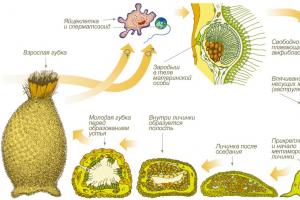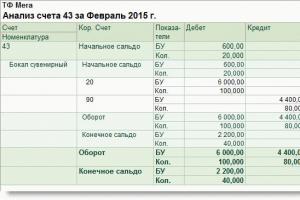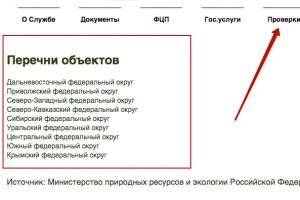Air and thermal curtains
I did a project to automate fairly simple single-phase heat curtains equipped with a 5 kW single-phase electric heater and having a built-in thermostat. The curtains were supposed to be placed in the passage at the entrance and exit of the room. It was assumed that the control would be automated in accordance with SNiP 41-01-2003 “Heating, Ventilation and Air Conditioning”, the air curtain would be turned on by the door opening sensor and turned off when the temperature reached the set value by the general thermostat, and the air curtain would have an adjustable run-out. In accordance with SNIP 2.04.05-91 “Heating, ventilation and air conditioning”, the activation of the air curtain should be blocked when the doors are opened. Automatic shutdown of the air curtain should be provided after the doors are closed and the normal room air temperature is restored. Thus, when open door(door condition is monitored by magnetic contact sensors) appropriate thermal curtain will be turned on, the heat curtain will work until the room temperature is restored to the normal value (set on the thermostat). On the TS thermostat pos. 1 the temperature control range should be limited using limiters located under the thermostat cover. Terminals X1-X2 were provided to allow centralized control. If necessary, install a jumper (made from wire PV3). On time relays KT1, KT2, set the function “time delay when the control pulse is turned off with instantaneous closure of the output - “e”. On the time relay, set the time for the minimum operation of the thermal curtain, to avoid frequent switching on and off of thermal curtains, 30-180 seconds. On the thermostat For thermal curtains, it is recommended to set a temperature limiting the activation of the curtain.
At the last moment the decision was abandoned because... the customer chose more expensive curtains with adjustable air flow direction, where similar automation was implemented as additional equipment.
AIR CURTAINS from SNiP 41-01-2003 “Heating, ventilation and air conditioning”
Clause 7.7.1 Air and air-heat curtains should provide:
a) at permanently open openings in the external walls of premises, as well as at gates and openings in external walls that do not have vestibules and open more than five times or for at least 40 minutes per shift, in areas with an estimated outside air temperature of minus 15 ° C and below (parameters B);
b) at the external doors of the lobbies of public and administrative buildings - depending on the design temperature, °C, outside air (parameters B) and the number of people passing through the doors within 1 hour:
from minus 15 to minus 25 - 400 people. and more;
» » 26 » » 40 - 250 people. and more;
below minus 40 - 100 people. and more;
c) when justified - at the external doors of buildings, if the lobby is adjacent to rooms without a vestibule, equipped with air conditioning systems;
d) at external doors, gates and openings of rooms with wet conditions;
e) when justified - at openings in interior walls and partitions production premises to prevent the flow of air from one room to another;
f) when justified - at gates, doors and openings of air-conditioned premises or according to design instructions, or according to special technological requirements.
The heat supplied by intermittent air curtains should not be included in the air and heat balances of the building.
7.7.2 Air and air-heat curtains at external openings, gates and doors should be calculated taking into account wind pressure. Air flow should be determined by taking the outside air temperature and wind speed at parameters B, but not more than 5 m/s. If the wind speed at parameters B is less than at parameters A, then the air heaters should be checked for parameters A. Speed, m/s, of air release from cracks or holes air-thermal curtains should take no more than:
8 - at external doors;
25 - at gates and technological openings.
7.7.3 The design temperature, °C, of the air mixture entering the room through external doors, gates and openings should be taken as no less than:
12 - for industrial premises for light and medium-heavy work and for the lobbies of public and administrative buildings;
5 - for industrial premises with heavy work and the absence of permanent workplaces at a distance of 6 m or less from doors, gates and openings.
POWER SUPPLY AND AUTOMATION OF HEAT CURTAINS from SNiP 41-01-2003 “Heating, ventilation and air conditioning”
12.1 Electrical installations of heating, ventilation, air conditioning and smoke ventilation systems must meet the requirements of the electrical installation rules (PUE) and state standards for electrical installations of buildings, taking into account the requirements of this section.
12.2 Electrical receivers of heating, ventilation and air conditioning systems should be of the same category as those installed for electrical receivers of process or engineering equipment building.
The power supply for emergency ventilation and smoke protection systems, except for systems for removing gases and smoke after a fire (8.12), should be of the first category. Systems for removing gases and smoke after a fire may be designed in the first category according to the design specifications. If, due to local conditions, it is impossible to supply power to first category electrical receivers from two independent sources, it is allowed to supply them from one source from different transformers of a two-transformer substation or from two nearby single-transformer substations. In this case, substations must be connected to different supply lines laid along different routes, and have automatic reserve input devices, as a rule, on the low voltage side.
For supply systems ventilation, the power supply to the frost protection control circuits should be carried out in the first category. It is allowed to supply power according to the second category when organizing separate power supply for the electric drive of the fan and the automation panel of the supply system.
Thermal and maximum protection should not be provided in the control circuits of electrical receivers.
12.3 In buildings and premises equipped with smoke ventilation systems, automatic fire alarm.
In rooms equipped with an automatic water (foam) fire extinguishing system, smoke removal zones must coincide with sprinkler fire extinguishing zones.
12.4 For buildings and premises equipped automatic installations fire extinguishing or automatic fire alarm systems, automatic blocking of electrical receivers of the systems should be provided air heating, except for air-heat curtains for ventilation and air conditioning (hereinafter referred to as ventilation systems), with electrical receivers for smoke protection systems for:
a) shutting down ventilation systems in case of fire, except for air supply systems to airlocks of premises of categories A and B, as well as c engine rooms elevators of buildings of categories A and B. Disconnection can be made:
- centrally stopping the power supply to the distribution boards of ventilation systems;
- individually for each system.
When using equipment and automation equipment supplied complete with ventilation system equipment, shutdown of supply systems in case of fire should be done individually for each system while maintaining power supply to the frost protection circuits. If it is impossible to maintain power to the frost protection circuits, it is permissible to disconnect the systems by sending signals from the fire alarm system to the circuit remote control system.
When organizing a shutdown in case of fire using a circuit breaker with an independent release, the signal transmission line must be checked for shutdown;
b) activation of emergency smoke protection systems in case of fire (except for the systems specified in 8.12);
c) opening fire and smoke dampers in the room or smoke zone in which the fire occurred, or in the corridor on the floor of the fire and closing the fire suppression valves.
Smoke and fire dampers, smoke hatches, transoms (flashes) and other opening devices of shafts, lanterns and windows intended for smoke protection must have automatic, remote and manual (at installation sites) control.
For buildings in which dispatch of engineering equipment is provided, as well as when placing large quantity valves in hard to reach places Smoke and fire dampers with automatic, remote and manual control should be used.
Notes
1 The need for partial or complete shutdown of ventilation systems, closing fire dampers and opening fire and smoke dampers - according to the design specifications.
2 For premises that have only a manual fire alarm system, provision should be made for remote shutdown of ventilation systems serving these premises and activation of smoke protection systems.
Disabling ventilation systems and turning on smoke protection systems can be performed from signals manual call points fire alarm systems installed along escape routes.
If there is a need to turn on fire pumps from buttons at fire hydrants, it is allowed to use this signal to turn off ventilation systems and turn on smoke protection systems.
12.5 Premises with automatic fire alarms must be equipped with remote devices located outside the premises they serve.
If there are requirements for simultaneous shutdown of all ventilation systems in rooms of categories A and B, remote devices should be provided outside the building.
For premises of categories B1-B4, it is allowed to provide for remote shutdown of ventilation systems for individual zones with an area of at least 3000 m2.
12.6 For the equipment of metal pipelines and air ducts of heating and ventilation systems of premises of categories A and B, as well as local suction systems that remove explosive mixtures, grounding should be provided in accordance with the requirements of the PUE.
12.7 The level of automation and control of systems should be selected depending on technological requirements, economic feasibility and design assignments.
12.8 The parameters of the coolant (coolant) and air must be monitored in the following systems:
a) internal heat supply - temperature and pressure of the coolant in the common supply and return pipelines in the room for supply ventilation equipment; temperature and pressure - at the outlet of heat exchange devices;
b) heating with local heating devices - air temperature in control rooms (as required by the technological part of the project);
c) air heating and supply ventilation- supply air temperature and air temperature in the control room (as required by the technological part of the project);
d) air showering - the temperature of the supplied air;
e) air conditioning - the temperature of the external, recirculation, supply air after the irrigation chamber or surface air cooler and in the premises; relative humidity indoor air (when regulated);
f) refrigeration supply - the temperature of the coolant before and after each heat exchange or mixing device, the pressure of the coolant in the common pipeline;
g) ventilation and air conditioning with filters, static pressure chambers, heat exchangers - pressure and air pressure difference (on request technical specifications on equipment or operating conditions).
12.9 Remote monitoring devices should be provided to measure basic parameters; To measure other parameters, local instruments (portable or stationary) should be provided.
For several systems whose equipment is located in the same room, as a rule, one common device should be provided for measuring temperature and pressure in the supply pipe and individual devices on equipment return pipelines.
When using controllers with analog sensors, it is allowed not to install visual monitoring instruments.
12.10 Alarms about equipment operation (“On”, “Alarm”) should be provided for systems:
a) ventilation of premises without natural ventilation of industrial, administrative and public buildings;
b) local suctions that remove harmful substances of the 1st and 2nd hazard classes or explosive mixtures;
c) general exchange exhaust ventilation premises of categories A and B;
d) exhaust ventilation of warehouse premises of categories A and B, in which deviation of controlled parameters from the norm can lead to an accident.
Note - Requirements relating to rooms without natural ventilation do not apply to restrooms, smoking rooms, dressing rooms and other similar rooms.
12.11 Remote control and registration of basic parameters in heating, ventilation and air conditioning systems should be designed according to technological requirements and according to the design specifications.
The amount of information transmitted from the local automation panel to the control panel (console) is determined according to the design assignment, taking into account the operating conditions of the systems.
12.12 Automatic control of parameters should be designed for systems:
a) heating carried out in accordance with 6.2.3;
b) air heating and showering;
c) supply and exhaust ventilation operating with variable air flow, as well as with a variable mixture of outside and recirculated air;
d) supply ventilation (if justified);
e) conditioning;
f) refrigeration;
g) local additional humidification of indoor air;
h) heating the floors of buildings in accordance with 6.1.5, with the exception of systems connected to centralized heating networks.
Note - For public, administrative and industrial buildings, as a rule, software control of parameters should be provided to ensure a reduction in heat consumption.
12.13 Sensors for monitoring and regulating air parameters should be placed at characteristic points in the serviced or working area of the room in places where they are not influenced by heated or cooled surfaces and flows of supply air. It is allowed to place sensors in recirculation (or exhaust) air ducts if the air parameters in them do not differ from the air parameters in the room or differ by a constant amount.
12.14 Automatic blocking should be provided for:
a) opening and closing external air valves when turning fans on and off;
b) opening and closing valves of ventilation systems connected by air ducts for complete or partial interchangeability in the event of failure of one of the systems;
c) closing fire dampers (8.12) on air ducts for rooms protected by gas or powder fire extinguishing when the fans of the ventilation systems of these premises are turned off;
d) switching on backup equipment in case of failure of the main one according to the design assignment;
e) turning on and off the coolant supply when turning on and off air heaters and heating units;
f) activation of emergency ventilation systems in the event of formation in the air working area concentration rooms harmful substances, exceeding the maximum permissible concentration or maximum concentration limit, as well as concentrations of flammable substances in the air of the room exceeding 10% of the maximum concentration limit of the gas, steam, dust-air mixture.
12.15 Automatic blocking of fans of local suction and general ventilation systems specified in 7.2.4 and 7.2.5, which do not have backup fans, with process equipment should ensure that the equipment stops when the fan fails, and if it is impossible to stop the process equipment, an alarm is turned on.
12.16 For systems with variable external or supply air flow, interlocking devices should be provided to ensure minimum flow outside air.
12.17 For exhaust ventilation with air purification in wet dust collectors, automatic blocking of the fan with a device for supplying water to the dust collectors should be provided, ensuring:
a) turning on the water supply when the fan is turned on;
b) stopping the fan when the water supply stops or the water level in the dust collector drops;
c) the impossibility of turning on the fan if there is no water or the water level in the dust collector drops below a predetermined level.
12.18 The activation of the air curtain should be blocked when gates, doors and technological openings are opened. Automatic shutdown of the air curtain should be provided after the gates, doors or technological openings are closed and the normal air temperature in the room is restored, providing for a reduction in coolant flow to the minimum that ensures non-freezing of water.
When using systems with electric air heaters, protection against overheating of the air heaters should be provided.
12.19 Automatic protection against freezing of water in air heaters should be provided in areas with a design outside air temperature for the cold period of the year minus 5 °C and below (parameters B).
12.20 Dispatching systems should be designed for industrial, residential, public and administrative buildings in which dispatching is provided technological processes or operation of engineering equipment.
12.21 The accuracy of maintaining meteorological conditions during air conditioning (if there are no special requirements) should be taken at the points of installation of sensors for systems:
a) first and second classes - ±1 °C in temperature and ±7% in relative humidity;
b) with local air conditioners and mixers with individual direct-acting temperature controllers - ±2 °C.
Dear Little Ru
For yours:
“The state examination requires turning off air conditioning systems”
It’s not Gods, or even angels, or computers that work there...
People, people make mistakes.
For different reasons.
They do not have a deep grasp of the ENTIRE boundless sea of information.
Rush.
Steriopit.
I myself am a sinner, I worked in one of the examinations.
30-20 minutes were given for the project along with writing a conclusion.
Projects were naturally delivered on a cart, volumes.
There are 10-12 projects per day.
In terms of diversity and complexity - mother, don’t worry, as they say.
Sometimes there is no time to understand the norm, its essence.
When to figure it out, SYSTEM, not SYSTEM... it’s better not to miss a mistake than to miss it.
The police chief came and defended it if it was important to him.
The point was removed, but of course they didn’t pat me on the head for that.
But there were very persistent and competent GUIs.
For information on the topic.
(From another branch).
It may help to work with a clueless expert.
Workshop materials
at the Federal State Institution “Glavgosexpertza of Russia” on June 9, 2009 on the application of the Technical Regulations on Requirements fire safety
For high-quality examination and identification of all violations technical requirements related to the object in question requires high qualifications, which are acquired in the process of many years practical work with regulatory documents and project documentation. Therefore, the reliability of a novice expert’s work is 0.16-0.2. The reliability of an expert's work increases to an acceptable level within 10-12 years.
This is explained by the presence of a large volume of conceptually complex and interconnected regulatory requirements, the number of which exceeds 60,000. With the introduction of fire safety codes and a reduction in the number of regulatory documents, the number of regulatory requirements increases and they become more complex. The enormous capabilities of human long-term memory are offset by the limited capabilities of RAM, which ensures professional activity in conditions of time shortage and information overload.
. The enormous capabilities of human long-term memory are offset by the limited capabilities of RAM, which ensures professional activity under conditions of time shortage and information overload.
Interpretation of fire safety requirements
In accordance with the provisions of Art. Art. 15, 18, 34, 55 of the Constitution of the Russian Federation; Art. Art. 1-3 of the Civil Code of the Russian Federation and Art. 4, 7 Federal Law“On Technical Regulation” the requirements for the protection of property are interpreted as requirements for the protection of someone else’s property.
If there are regulatory conflicts that cause irremovable doubts, fire safety requirements are interpreted in favor of the developer (customer).
1. Responsibility of experts
for poor quality examination
Criminal liability occurs:
under Article 169 of the Criminal Code of the Russian Federation “Obstruction of lawful entrepreneurial activity", in cases of inclusion in the fire safety systems of objects of high-cost fire safety measures aimed at protecting the developer’s own property, causing harm to him in the form of lost profits, and violating the requirements of Art. 7 Part 2 of the Federal Law “On Technical Regulation”;
under Article 293 of the Criminal Code of the Russian Federation “Negligence” in connection with Art. 217 of the Criminal Code of the Russian Federation “Violation of safety rules at explosive objects” and 219 of the Criminal Code of the Russian Federation “Violation of fire safety rules”, in cases of death or serious harm to their health in fires, in the presence of a cause-and-effect relationship with specific violations of fire safety requirements.
Civil (property) liability arises in the event of damage caused to the owner by the acquisition of an object with violations of fire safety requirements committed during the design, examination and construction by the organizations performing these works.
Administrative responsibility of heads of examination bodies and their structural divisions under Article 3.11 of the Code of Administrative Offenses of the Russian Federation “Disqualification” occurs based on the results of prosecutorial checks of complaints and statements legal entities and citizens, in cases of incorrect classification of violations of fire safety requirements during the examination of project documentation.
2. Legal basis
application of fire safety requirements
Article 15 of the Constitution Russian Federation
1. The Constitution of the Russian Federation has supreme legal force, direct effect and is applied throughout the territory of the Russian Federation. Laws and other legal acts adopted in the Russian Federation must not contradict the Constitution of the Russian Federation.
Article 18 of the Constitution of the Russian Federation
The rights and freedoms of man and citizen are directly applicable. They determine the meaning, content and application of laws, the activities of the legislative and executive powers, local self-government and are ensured by justice.
Article 34 of the Constitution of the Russian Federation
1. Everyone has the right to freely use their abilities and property for entrepreneurial and other economic activities not prohibited by law.
Article 54 of the Constitution of the Russian Federation
1. The law establishing or aggravating liability does not have retroactive effect.
2. No one can be held responsible for an act that at the time of its commission was not recognized as an offense. If, after the commission of an offense, liability for it is eliminated or mitigated, the new law applies.
Article 55 of the Constitution of the Russian Federation
3. The rights and freedoms of man and citizen may be limited by federal law only to the extent necessary in order to protect the foundations of the constitutional system, morality, health, rights and legitimate interests of other persons, to ensure the defense of the country and the security of the state.
Article 1 of the Civil Code of the Russian Federation
2. Civil rights may be limited on the basis of federal law and only to the extent necessary in order to protect the foundations of the constitutional system, morality, health, rights and legitimate interests of other persons, ensuring the defense of the country and the security of the state.
Article 2 of the Civil Code of the Russian Federation
1. Civil legislation regulates relations between persons engaged in entrepreneurial activities or with their participation, based on the fact that entrepreneurial activity is an independent activity carried out at one’s own risk.
Article 3 of the Civil Code of the Russian Federation
2. The rules of civil law contained in other laws must comply with this Code.
Articles 167, 168 and 219 of the Criminal Code of the Russian Federation provide for criminal liability only for the destruction of someone else's property, as well as for violations of fire safety rules that resulted in serious harm to human health or death.
Article 14 of the Criminal Procedure Code of the Russian Federation
4. A conviction cannot be based on assumptions.
Article 1.5 of the Code of the Russian Federation on Administrative Offenses
4. Irremovable doubts about the guilt of a person brought to administrative responsibility shall be interpreted in favor of this person.
Article 3.12 of the Code of the Russian Federation on Administrative Offenses
1. ...Administrative suspension of activities is applied by the court in the event of a threat to the life and health of people ... causing significant harm to the condition or quality environment ….
Article 7 of the Federal Law “On Technical Regulation”
2. The requirements of technical regulations cannot serve as an obstacle to the implementation of entrepreneurial activities to a greater extent than is minimally necessary to achieve the goals specified in paragraph 1 of Article 6 of this Federal Law.”
Article 6 of the Federal Law “On Technical Regulation”
1. Technical regulations are adopted for the purposes of: protecting the life or health of citizens, property of individuals or legal entities, state or municipal property;
protection of the environment, life or health of animals and plants; prevention of actions that mislead purchasers.
2. The adoption of technical regulations for other purposes is not permitted.
I won’t give clear answers, I’ll just think about this topic...
1) ALL (!) Freon(!) upon contact with flame and hot surfaces (t>400 °C) can decompose to form highly toxic products, in particular phosgene, as well as hydrochloric and hydrofluoric acid;
2) There is such a thing as thermal decomposition of refrigerant, for example R22 will thermally decompose when exposed to steel pipe for 1-5 seconds temperature +280C. It follows that after a fire in the room where the indoor or outdoor air conditioner units are installed, or in the room through which the pipeline with refrigerant passes, it is necessary to check whether the refrigerant has decomposed, or even better, replace it immediately, because of point 3...
3) Almost all refrigeration oils have a decomposition temperature in the range from +140 to +200 C, refrigeration oils are completely soluble with the refrigerant, so in fact, refrigerant with a certain oil content circulates through the system. Under the influence high temperature In a fire, the oil will decompose. Accordingly, it needs to be replaced.
4) Based on paragraphs. 2 and 3, it is impossible to operate the air conditioning system during a fire, since it is highly likely to fail.
5) Since the air conditioning system is sealed, there is a strict relationship between pressure and temperature; the higher the temperature, the higher the pressure, if there is no safety valve, then in the event of a fire at the installation site of the outdoor unit (the receiver and condenser in which contain the bulk of the refrigerant charged into the system), the vessel or apparatus will rupture, respectively. Gap indoor unit or pipelines are unlikely, but possible (for example, due to poor quality of solder joints).
6) Room temperature +40-+42 C is not a reason to turn off the air conditioning system (for many countries this is normal temperature outdoors, not like indoors).
In general, on the topic of automatic shutdown at a temperature of +42C -
In good ventilation equipment with built-in The automation system must have it wired up. For example - Swedish SWEGON. There the reason for this temperature (+42C) is exactly the same as I said above. That is, the fan motor bearing lubrication is not designed for high-temperature operation. Therefore, in order not to damage the bearing (and the engine), the automation monitors the temperature of the exhaust air (extracted from the room).
To be honest, the temperature limit of 40 degrees confuses me... I have a lot of capacitors standing outside, under direct sun rays they warm up much higher than +40 C, this is probably not the reason... All normal and high-quality fan motors (we don’t buy from China) have built-in thermal protection, accordingly it is configured at the factory (fan manufacturer, not air conditioners) and in case of problems with the temperature, the engine should be turned off... Something is still wrong with the protection at +40 C...








